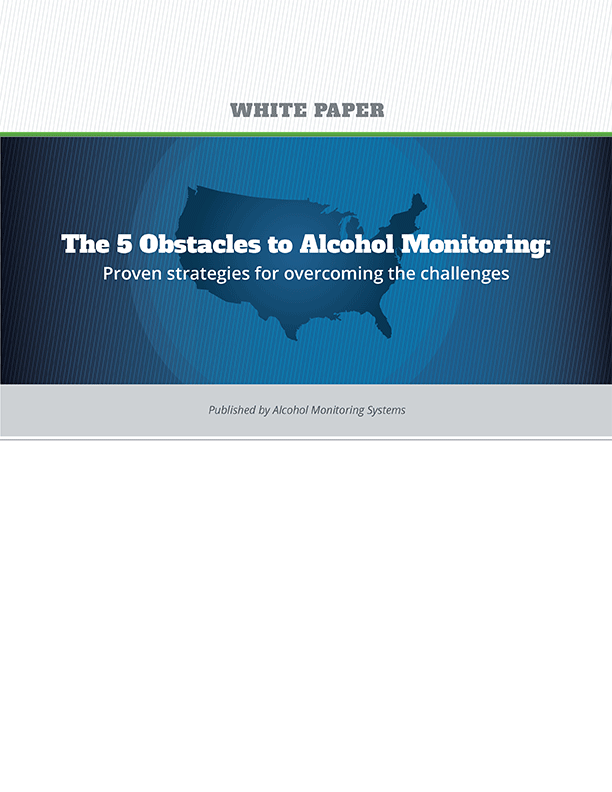A Sober Day can be defined as a 24-hour period in which a monitored individual has no confirmed consumption of alcohol and no confirmed attempt to tamper or circumvent testing in order to mask the consumption of alcohol. To be a true Sober Day, an offender must:
- Be able to present evidence-based confirmation of sobriety for each 24-hour period
- Be monitored transdermally (via perspiration/the skin) in order to meet the required test frequency
- Be tested a minimum of once per hour per 24-hour period
- Be tested automatically, with no requirement to participate in the testing
The SCRAM bracelet is the only alcohol monitoring tool or device on the market today that reinforces Sober Days.
Download this Sober Days White Paper, The 5 Obstacles to Alcohol Monitoring: Proven Strategies for Overcoming the Challenges
This 11‒page white paper will provide you with a more in-depth look at:
- The challenge of high alcohol metabolism rates in alcohol addicted offenders
- The behavioral patterns of addicted offenders
- The balancing act between the cost of monitoring and the risks offenders pose
- Funding challenges that make implementation of regular alcohol monitoring difficult
- The obstacle of justifying a comprehensive alcohol program
- Common program eligibility criteria
- How to assess the effectiveness of your program using Sober Days
Download White Paper


